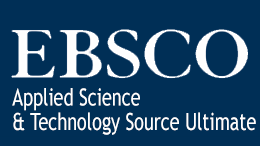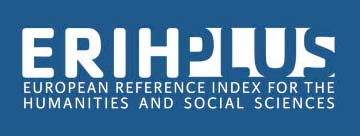Rhus Coriaria Ekstraktı İçeren Yenilikçi Bir Fito-Kompleksin Erken ve Geç Kolonize olan Karyojenik Bakteriler Üzerine Antibakteriyel Aktivitesi
Abstract
Amaç: Rhus coriaria, yaygın olarak sumak olarak bilinen, Rhus cinsine ait kurutulmuş meyvelerden elde edilen bir baharattır ve potansiyel antienflamatuar etkileri mevcuttur. Bu çalışmanın amacı, Rhus Coriaria ekstresi içeren yenilikçi bir fito-kompleksin, kariyojenik aktiviteyle ilişkili erken ve geç kolonizatörlere karşı antimikrobiyal etkinliğini araştırmaktır.
Gereç ve Yöntem: Deneysel fito-kompleks (G1-G5) örnekleri, farklı konsantrasyonlardaki Rhus coriaria aköz ekstraktlarını (%0.0; %6.25; %12.5; %18.75; %25) ve %5 propolis ve yardımcı bitkisel bileşenleri ile hazırlanmıştır. Agar-well yöntemi ile Staphylococcus aureus, Escherichia coli, Streptococcus mitis, Streptococcus oralis, Streptococcus mutans ve Scardovia wiggsiae üzerine antibakteriyel etkinlik test edilmiştir.
Bulgular: Rhus coriaria ekstraktı içeren tüm deneysel gruplar (G2–G5), Staphylococcus aureus, Streptococcus mitis, Streptococcus oralis, Streptococcus mutans ve Scardovia wiggsiae'nin büyümesini konsantrasyona bağlı olarak inhibe etmiştir, en yüksek etkinlik G5'te (%25) gözlemlenmiştir. Escherichia coli üzerinde tüm formülasyonlarda inhibe edici etki gözlemlenmemiştir.
Sonuç: Rhus Coriaria aktif bileşenini içeren yenilikçi bir fito-kompleks, Staphylococcus aureus ve diş çürüğünün etiyolojisinde rol oynayan belirli bakteriyel suşlar (Streptococcus mitis, Streptococcus oralis, Streptococcus mutans ve Scardovia wiggsiae) üzerinde konsantrasyona bağlı olarak artan inhibe edici etki göstermiştir.
References
- Puranik M, Harish Y, Anushri M. Herbs: A good alternatives to current treatments for oral health problems. Int J Adv Health Sci. 2015;1:26-32.
- Ancuceanu R, Anghel AI, Ionescu C, Hovanet MV, Cojocaru-Toma M, Dinu M. Clinical trials with herbal products for the prevention of dental caries and their quality: A scoping study. Biomolecules. 2019;9:884.
- Celik ZC, Yavlal GO, Yanikoglu F, et al. Do ginger extract, natural honey and bitter chocolate remineralize enamel surface as fluoride toothpastes? An in-vitro study. Niger J Clin Pract. 2020;24:1283-1288.
- Wagh VD. Propolis: A wonder bees' product and its pharmacological potentials. Adv Pharmacol Sci. 2014;2014:1-12.
- Liberio SA, Pereira AL, Araujo MJ, et al. The potential use of propolis as a cariostatic agent and its actions on mutans group streptococci. J Ethnopharmacol. 2009;125:1-9.
- Luque-Bracho A, Rosales Y, Vergara-Buenaventura A. The benefits of propolis in periodontal therapy: A scoping review of preclinical and clinical studies. J Ethnopharmacol. 2023;303:115926.
- Polizzi A, Leanza Y, Belmonte A, Grippaudo C, Leonardi R, Isola G. Impact of hyaluronic acid and other re-epithelializing agents in periodontal regeneration: A molecular perspective. Int J Mol Sci. 2024;25(22):12347.
- Ghorbani A, Ghasemzadeh Z, Ghaffari Hamedani SMM, et al. Efficacy of black mulberry mouthwash for prevention of chemotherapy-induced oral mucositis: A double-blind randomized clinical trial. Front Dent. 2025;22:10.
- Batiha GE, Ogunyemi OM, Shaheen HM, et al. Rhus coriaria L. (Sumac), a versatile and resourceful food spice with cornucopia of polyphenols. Molecules. 2022;27:5179.
- Marghalani AA, Guinto E, Phan M, Dhar V, Tinanoff N. Effectiveness of xylitol in reducing dental caries in children. Pediatr Dent. 2017;39(2):103-110.
- Opiyo SA, Njoroge PW, Ndirangu EG, Kuria KM. A review of biological activities and phytochemistry of Rhus species. Am J Chem. 2021;11:28-36.
- Kosar M, Bozan B, Temelli F, Baser KHC. Antioxidant activity and phenolic composition of sumac (Rhus coriaria L.) extracts. Food Chem. 2007;103:952-959.
- Arena K, Trovato E, Cacciola F, et al. Phytochemical characterization of Rhus coriaria L. extracts by headspace solid-phase microextraction gas chromatography, comprehensive two-dimensional liquid chromatography, and antioxidant activity evaluation. Molecules. 2022;27:1727.
- Kacergius T, Abu-Lafi S, Kirkliauskiene A, et al. Inhibitory capacity of Rhus coriaria L. extract and its major component methyl gallate on Streptococcus mutans biofilm formation by optical profilometry: Potential applications for oral health. Mol Med Rep. 2017;16:949-956.
- Moghadam P, Dadelahi S, Hajizadeh YS, Matin MG, Amini M, Hajazimian S. Chemical composition and antibacterial activities of sumac fruit (Rhus coriaria) essential oil on dental caries pathogens. Open Microbiol J. 2020;14:142-146.
- Forssten SD, Bjorklund M, Ouwehand AC. Streptococcus mutans, caries and simulation models. Nutrients. 2010; 2(3):290-298.
- Tanner AC, Mathney JM, Kent RL, et al. Cultivable anaerobic microbiota of severe early childhood caries. J Clin Microbiol. 2011;49:1464-1474.
- Kressirer CA, Smith DJ, King WF, Dobeck JM, Starr JR, Tanner ACR. Scardovia wiggsiae and its potential role as a caries pathogen. J Oral Biosci. 2017;59:135-141.
- Kameda M, Abiko Y, Washio J, et al. Sugar metabolism of Scardovia wiggsiae, a novel caries-associated bacterium. Front Microbiol. 2020;11:479.
- Wang H, Ren D. Controlling Streptococcus mutans and Staphylococcus aureus biofilms with direct current and chlorhexidine. AMB Express. 2017;7(1):204.
- Aas JA, Paster BJ, Stokes LN, Olsen I, Dewhirst FE. Defining the normal bacterial flora of the oral cavity. J Clin Microbiol. 2005;43:5721-5732.
- Wolfgang WJ, Passaretti TV, Jose R, et al. Neisseria oralis sp. nov., isolated from healthy gingival plaque and clinical samples. Int J Syst Evol Microbiol. 2013;63:1323-1328.
- Garcia SS, Blackledge MS, Michalek S, et al. Targeting of Streptococcus mutans biofilms by a novel small molecule prevents dental caries and preserves the oral microbiome. J Dent Res. 2017;96:807-814.
- Gabr SA, Alghadir AH. Evaluation of the biological effects of lyophilized hydrophilic extract of Rhus coriaria on myeloperoxidase activity, wound healing, and microbial infections of skin wound tissues. Evid Based Complement Alternat Med. 2019;2019:5861537.
- Djais AA, Putri N, Jemmy PAR, Darwita RR, Bachtiar BM. Effect of propolis on Streptococcus mutans biofilm formation. Pesqui Bras Odontopediatria Clin Integr. 2019;19:1-9.
- Isaac RD, Sanjeev K, Subbulakshmi CL, Amirtharaj LV, Sekar M. Identification of a novel bacterium Scardovia wiggsiae in high caries risk adolescence: A metagenomic and melt curve analysis. J Conserv Dent. 2022;25:297-305.
- Ranjha MMAN, Irfan S, Lorenzo JM, et al. Sonication, a potential technique for extraction of phytoconstituents: A systematic review. Processes. 2021;9(8):1406.
Antibacterial Activity of a Novel Phyto-Complex of Rhus Coriaria Extract on Growth of Early and Late Colonizer Cariogenic Bacteria
Abstract
Aim: Rhus coriaria, commonly known as sumac, is a spice derived from the dried fruits of the Rhus genus supports oral health by potentially reducing bacterial growth and inflammation, making it a candidate for enhancing dental care products. The present study aimed to investigate the antimicrobial efficacy of a novel phyto-complex consisting a Rhus Coriaria extract, against early and late colonizers associated with cariogenic activity.
Materials & Methods: Sonicated samples of experimental phyto-complex (G1-G5) contained aqueous extracts of Rhus coriaria at different concentrations of 0.0%; 6.25%; 12.5%; 18.75%; 25% and %5 propolis and adjunctive herbals. Antibacterial efficacy on Staphylococcus aureus, Escherichia coli, Streptococcus mitis, Streptococcus oralis, Streptococcus mutans and Scardovia wiggsiae was tested using the agar-well method.
Results: All experimental groups containing Rhus coriaria extract (G2–G5) exhibited a concentration-dependent inhibition of growth for Staphylococcus aureus, Streptococcus mitis, Streptococcus oralis, Streptococcus mutans, and Scardovia wiggsiae, with the highest efficacy observed in G5 (25% extract). No inhibitory effects were observed against Escherichia coli across all formulations.
Conclusion: A novel phyto-complex with the active ingredient Rhus Coriaria with antioxidant nature has demonstrated a concentration-dependent increasing inhibitory effect on Staphylococcus aureus and specific bacterial strains involved in the etiology of dental caries: Streptococcus mitis, Streptococcus oralis, Streptococcus mutans, and Scardovia wiggsiae.
References
- Puranik M, Harish Y, Anushri M. Herbs: A good alternatives to current treatments for oral health problems. Int J Adv Health Sci. 2015;1:26-32.
- Ancuceanu R, Anghel AI, Ionescu C, Hovanet MV, Cojocaru-Toma M, Dinu M. Clinical trials with herbal products for the prevention of dental caries and their quality: A scoping study. Biomolecules. 2019;9:884.
- Celik ZC, Yavlal GO, Yanikoglu F, et al. Do ginger extract, natural honey and bitter chocolate remineralize enamel surface as fluoride toothpastes? An in-vitro study. Niger J Clin Pract. 2020;24:1283-1288.
- Wagh VD. Propolis: A wonder bees' product and its pharmacological potentials. Adv Pharmacol Sci. 2014;2014:1-12.
- Liberio SA, Pereira AL, Araujo MJ, et al. The potential use of propolis as a cariostatic agent and its actions on mutans group streptococci. J Ethnopharmacol. 2009;125:1-9.
- Luque-Bracho A, Rosales Y, Vergara-Buenaventura A. The benefits of propolis in periodontal therapy: A scoping review of preclinical and clinical studies. J Ethnopharmacol. 2023;303:115926.
- Polizzi A, Leanza Y, Belmonte A, Grippaudo C, Leonardi R, Isola G. Impact of hyaluronic acid and other re-epithelializing agents in periodontal regeneration: A molecular perspective. Int J Mol Sci. 2024;25(22):12347.
- Ghorbani A, Ghasemzadeh Z, Ghaffari Hamedani SMM, et al. Efficacy of black mulberry mouthwash for prevention of chemotherapy-induced oral mucositis: A double-blind randomized clinical trial. Front Dent. 2025;22:10.
- Batiha GE, Ogunyemi OM, Shaheen HM, et al. Rhus coriaria L. (Sumac), a versatile and resourceful food spice with cornucopia of polyphenols. Molecules. 2022;27:5179.
- Marghalani AA, Guinto E, Phan M, Dhar V, Tinanoff N. Effectiveness of xylitol in reducing dental caries in children. Pediatr Dent. 2017;39(2):103-110.
- Opiyo SA, Njoroge PW, Ndirangu EG, Kuria KM. A review of biological activities and phytochemistry of Rhus species. Am J Chem. 2021;11:28-36.
- Kosar M, Bozan B, Temelli F, Baser KHC. Antioxidant activity and phenolic composition of sumac (Rhus coriaria L.) extracts. Food Chem. 2007;103:952-959.
- Arena K, Trovato E, Cacciola F, et al. Phytochemical characterization of Rhus coriaria L. extracts by headspace solid-phase microextraction gas chromatography, comprehensive two-dimensional liquid chromatography, and antioxidant activity evaluation. Molecules. 2022;27:1727.
- Kacergius T, Abu-Lafi S, Kirkliauskiene A, et al. Inhibitory capacity of Rhus coriaria L. extract and its major component methyl gallate on Streptococcus mutans biofilm formation by optical profilometry: Potential applications for oral health. Mol Med Rep. 2017;16:949-956.
- Moghadam P, Dadelahi S, Hajizadeh YS, Matin MG, Amini M, Hajazimian S. Chemical composition and antibacterial activities of sumac fruit (Rhus coriaria) essential oil on dental caries pathogens. Open Microbiol J. 2020;14:142-146.
- Forssten SD, Bjorklund M, Ouwehand AC. Streptococcus mutans, caries and simulation models. Nutrients. 2010; 2(3):290-298.
- Tanner AC, Mathney JM, Kent RL, et al. Cultivable anaerobic microbiota of severe early childhood caries. J Clin Microbiol. 2011;49:1464-1474.
- Kressirer CA, Smith DJ, King WF, Dobeck JM, Starr JR, Tanner ACR. Scardovia wiggsiae and its potential role as a caries pathogen. J Oral Biosci. 2017;59:135-141.
- Kameda M, Abiko Y, Washio J, et al. Sugar metabolism of Scardovia wiggsiae, a novel caries-associated bacterium. Front Microbiol. 2020;11:479.
- Wang H, Ren D. Controlling Streptococcus mutans and Staphylococcus aureus biofilms with direct current and chlorhexidine. AMB Express. 2017;7(1):204.
- Aas JA, Paster BJ, Stokes LN, Olsen I, Dewhirst FE. Defining the normal bacterial flora of the oral cavity. J Clin Microbiol. 2005;43:5721-5732.
- Wolfgang WJ, Passaretti TV, Jose R, et al. Neisseria oralis sp. nov., isolated from healthy gingival plaque and clinical samples. Int J Syst Evol Microbiol. 2013;63:1323-1328.
- Garcia SS, Blackledge MS, Michalek S, et al. Targeting of Streptococcus mutans biofilms by a novel small molecule prevents dental caries and preserves the oral microbiome. J Dent Res. 2017;96:807-814.
- Gabr SA, Alghadir AH. Evaluation of the biological effects of lyophilized hydrophilic extract of Rhus coriaria on myeloperoxidase activity, wound healing, and microbial infections of skin wound tissues. Evid Based Complement Alternat Med. 2019;2019:5861537.
- Djais AA, Putri N, Jemmy PAR, Darwita RR, Bachtiar BM. Effect of propolis on Streptococcus mutans biofilm formation. Pesqui Bras Odontopediatria Clin Integr. 2019;19:1-9.
- Isaac RD, Sanjeev K, Subbulakshmi CL, Amirtharaj LV, Sekar M. Identification of a novel bacterium Scardovia wiggsiae in high caries risk adolescence: A metagenomic and melt curve analysis. J Conserv Dent. 2022;25:297-305.
- Ranjha MMAN, Irfan S, Lorenzo JM, et al. Sonication, a potential technique for extraction of phytoconstituents: A systematic review. Processes. 2021;9(8):1406.
Details
| Primary Language | English |
|---|---|
| Subjects | Traditional, Complementary and Integrative Medicine (Other) |
| Journal Section | Research Articles |
| Authors | |
| Publication Date | August 27, 2025 |
| Submission Date | March 1, 2025 |
| Acceptance Date | May 20, 2025 |
| Published in Issue | Year 2025 Volume: 6 Issue: 2 |
IJTCMR
International Journal of Traditional and Complementary Medicine Research





